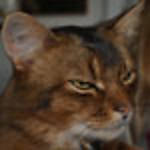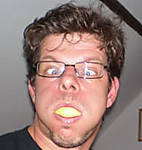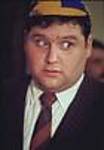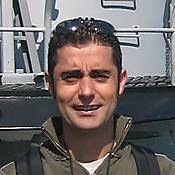You are viewing the archived version of the site.
Go to modelshipwrights.com for the current dynamic site!
Go to modelshipwrights.com for the current dynamic site!
Hell Off Lunga Point
9
Comments
"The second installment of his series on the famed four stacker destroyers from both World Wars, crew-mate Karl Zingheim (Captsonghouse) shares another fantastic Naval History diorama in this MSW feature!"
Casting off her charges from either side, the McFarland picked up speed and opened fire on the dive bombers. For several moments it looked as though the ship would make it through as one-by-one, each bomber missed, although one did bring a bomb close by.
However, the final plane nosed down and its small bomb hit the single depth charge rack right aft on the McFarland, blowing off the very stern and wrecking the nearby aft deck-house. The fuel barge nearby also detonated, shooting its volatile cargo in all directions.
Despite the severe damage, the McFarland's crew soon extinguished the ship's fires and got several newly-transferred Marine wounded transferred to other craft that came to help. Although the rudder had been obliterated, the propellers were intact and the tail-less ship limped across to nearby Tulagi Harbor for repairs.
Moored next to the jungle, the McFarland spent months in disguise until a jury rudder could be rigged and she made her way back to Hawaii for final repairs. Remarkably, the barge did not sink and was returned to service, but her crew was annihilated in the explosion.
The figures are Preiser, and the landing craft and barge are scratch-built. The blast effects are painted wax paper sheathed in polyfibre, and illuminated from within.
The Scene
On 16 October 1942, the USS McFarland was in the midst of transferring fuel and other aviation supplies to a landing craft and a self-propelled barge off Lunga Point, Guadalanal when a formation of Japanese dive bombers was spotted nearby.Casting off her charges from either side, the McFarland picked up speed and opened fire on the dive bombers. For several moments it looked as though the ship would make it through as one-by-one, each bomber missed, although one did bring a bomb close by.
However, the final plane nosed down and its small bomb hit the single depth charge rack right aft on the McFarland, blowing off the very stern and wrecking the nearby aft deck-house. The fuel barge nearby also detonated, shooting its volatile cargo in all directions.
Despite the severe damage, the McFarland's crew soon extinguished the ship's fires and got several newly-transferred Marine wounded transferred to other craft that came to help. Although the rudder had been obliterated, the propellers were intact and the tail-less ship limped across to nearby Tulagi Harbor for repairs.
Moored next to the jungle, the McFarland spent months in disguise until a jury rudder could be rigged and she made her way back to Hawaii for final repairs. Remarkably, the barge did not sink and was returned to service, but her crew was annihilated in the explosion.
The Models
This is the second installment of my series on the famed four stacker destroyers from both World Wars. The kit is the classic 1:240 Revell kit heavily modified with a new superstructure and armament.The figures are Preiser, and the landing craft and barge are scratch-built. The blast effects are painted wax paper sheathed in polyfibre, and illuminated from within.
Comments
Impressive, a interesting story told with some of the most difficoult effects to work with in modelling - well done!
Cheers/Jan
NOV 04, 2010 - 11:29 PM
Cool!
Maybe you've explained before, but how'd you do the explosions?
NOV 05, 2010 - 10:33 PM
As usual I am stunned by the gripping action of Karl's diorama. You can clearly identify a Zingheim when you see one.
Amazing work, Karl!
Cheers,
Guido
NOV 06, 2010 - 02:18 AM
Hi Karl
Interesting story, excellent model and an all action effect.
Excellent stuff, very impressive.
Al
NOV 06, 2010 - 03:15 AM
Hi Chuck!
I should submit a How-To feature, but in the meantime here's a quick primer:
1. You must have an internal light source. For simplicity and economy, I use
white Christmas tree light strings. In the case of the McFarland scene, I
opted for a light rig that had clear spherical bulbs about a half-inch (12mm)
in diameter. My HMS Repulse dio, however used the standard mini
Christmas white light set.
2. The incandescent gas bubble of the blast itself can be kitchen wax paper or
white kitchen parchment (freezer paper) because they're translucent. I
crumple a sheet tightly and then smooth it out again and crumple once more
and smooth out to both put in many irregular creases and to induce a convex
shaped so it can be gathered into a hollow ball.
3. Using florescent paints, a mix of oranges and reds with the odd bright yellow
highlight. I coat the outer side of the paper ball. Be careful with the paint
brand as I've found some flake off in bits from the paper, giving your
scene a bright orange case of dandruff!
4. Make a hole in your dio base and even in your model (!), if the scene calls
for it, large enough to pass the light bulb socket and secure it with the power
cord leading out the bottom. Install the light bulb if it could not fit through
the socket hole.
5. Take up the painted paper and gather it up into a hollow ball, cutting away
excess paper as it forms a rough sphere. Refer to photos of actual fireballs
to determine the relative size of the sphere. Since the orange fireballs are
more impressive than yellow ones, that means I'm depicting explosions that
have started to cool a second or so after the initial detonation, so it may be
necessary to add flying debris (and small splashes) around the blast.
6. Envelope the light installation with the cupped paper, ensuring the paper
and the bulb are not touching--we want a simulated fire, not a real one!!!
I've found that plastic zip ties are ideal for securing the throat of the paper
sphere around the light socket base.
7. Next, I use black polyfibre cotton (you can paint it black, too) and spread it
thinly about most of the surface area of the sphere. This adds a vaporlike
texture to the fireball and helps hide the hard edges of the folded up paper.
Don't put the polyfibre on too thickly, you are adding texture, not a layer.
8. Finally, turn on the light and add or remove polyfibre until you can hear the
explosion in your mind. The blasts look great in person, but for
photography, I've found the camera lens over-emphasizes the reflected
studio light on the cotton's fibres, making them appear like brillo pads. To
compensate, I use the basic retouch feature to fuzz out and blend the
extreme reflections.
There you are, so go out and light some fires!
--Karl
NOV 06, 2010 - 05:53 AM
Very impressive diorama, Karl! The smoke and fire effects look very convincing so this diorama gives a gripping and dramatic impression of the the story you are telling us. I love your work and I would really be delighted to see the real thing.
As Guido pointed out, your signature is clearly visible in this kind of action diorama that as a modeler one don't have the chance to see and enjoy frequently.
As I've incursioned in this field of "special effects" trying to recreate fire and smoke in my naval dioramas I know very well how difficult is to make fire and smoke and produce a realistic and convincing impression.
I agree with you that the use of an internal source of light is a must as I did years ago on my USS Indianapolis http://www.modelshipgallery.com/gallery/ca/ca-35/700-jm2/jm-index.html) The use of fluorsecent paints and black polyfibre cotton are a novelty for me and I would like to give them a try. Could you provide me with some links to these products?
Looks like both of us are tunning the same frequency...
Happy modeling,
Augusto
NOV 06, 2010 - 10:22 PM
Hey Augusto!
Insanity loves company.
As for product sources, I use paints that can be found on the hardware shelves as much as at the LHS'. Just look for the brightest oranges and reds you can find. Avoid so-called 'florescent' yellows--they turnout to be more yellow-green.
The material I use for smoke was produced years back as a Halloween novelty and is no longer available. However, ordinary polyfibre takes paint well and you can paint your own. I also understand there is a black quilting stuffer made for darker fabrics produced in Britain, though I have not used it yet.
Good luck and happy detonating!
--Karl
NOV 07, 2010 - 08:33 AM
Hi Karl
Your dios always look like stills taken from an old movie!
I really like the action you portray (like the gasoline drum flying over!), the courage to make difficult effects and I must say that I would like to see some shots taken with less light - much like Guido took with is "Perfect Storm" dio
I think you managed to make and excellent job with the old Revell model... You have a tendency to attack the "dogs" and make them jewels (not the best alchemy trick, but you understand what I mean).
Congratulations on another great scene!
Rui
NOV 08, 2010 - 04:51 AM
I wanted wanted to thank everyone for the kind comments on my latest submission.
Guido, your third-person reference was much appreciated, though it makes me sound like a Matisse (or least a Klimt) ! Rui, for my part, the only doggie thing about the Revell 4-stacker is the almost non-existent flare on the bows--that's one of those cure-is-worse-than-the-problem matters. But, everything else is fixable if you have the insanity to replace 90% of a kit... I've produced night scenes before, but not for photography. Finding digital cameras with slow shutter speeds to absorb all the light will be a challenge. Any assistance on low-light digital photography from the Kitmakers would be appreciated.
Thanks!
--Karl
NOV 09, 2010 - 07:27 AM
Copyright ©2021 by Karl Zingheim. _OPINIONS Model Shipwrights, KitMaker Network, or Silver Star Enterrpises. Images also by copyright holder unless otherwise noted. Opinions expressed are those of the author(s) and not necessarily those of Model Shipwrights. All rights reserved. Originally published on: 2010-11-06 00:00:00. Unique Reads: 10782

































